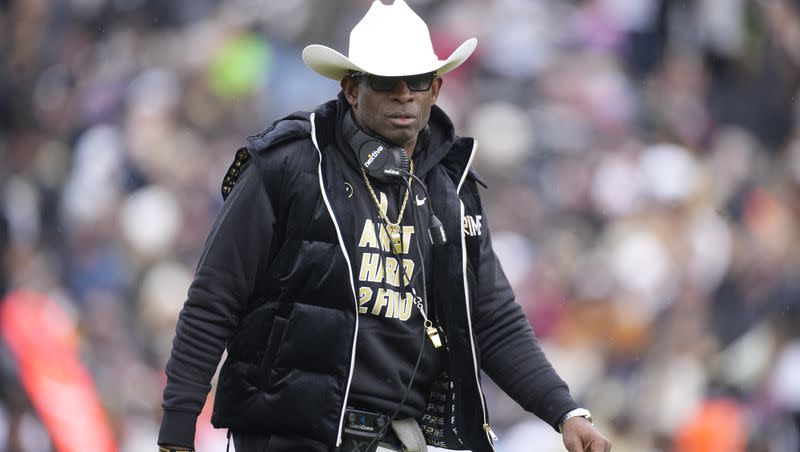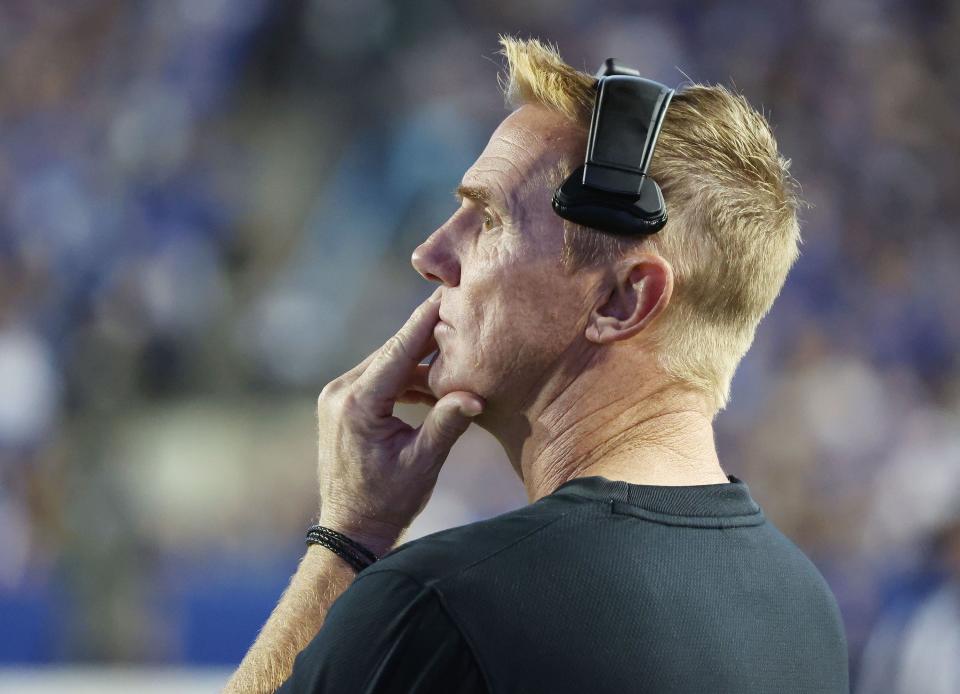Is the Wild West that is the NCAA transfer portal good or bad for college football?

The NCAA’s 15-day transfer portal window closes Sunday and there’s one word that accurately describes the past two weeks: carnage.
College players are jumping ship, being pushed off ships, getting on bigger ships and simply getting stranded without a ship.
In Utah, reports indicate the Utah State Aggies have had some 23 players enter the portal since the end of the 2022 season, BYU has had 23 and Utah 22.
The defections have taken place during two transfer windows. The first was a 45-day period after bowl games, the second, a two-week window from April 15-30.
At the University of Colorado, new coach Deion Sanders is establishing the benchmark for turning over a roster, and most of the departures are not by the choice of the athletes. By last count some 46 Buffaloes had entered the portal, 41 since Sanders became coach.
This is a wholesale turnover of the Colorado roster, a squad that went 1-11 last year but drew more than 45,000 fans to its spring game. Coach Prime is prime time in Boulder right now.
But can Colorado find enough talented players to fill the available spots and then build a culture and chemistry where almost everyone needs to be introduced to one another?
There are those who say forced transfers, or firings, go against the ideal of what college athletics is all about.
Washington State AD Pat Chun, speaking at the hearing, says athletes becoming employees would cause “irreparable damage” to college sports and the notion "that an athlete could be fired for underperformance" goes against the educational mission.
— Ross Dellenger (@RossDellenger) March 29, 2023
Others say — in the world of NIL money and freedom of movement, a kind of free agency that many athletes wanted, this is exactly what you asked for — the ugly side of pushing kids out is just part of doing business.
Chasing kids off a team is called a “run-off.”
It’s as old as the game itself.
The NCAA loosened rules protecting such run-offs even if some leagues have created player protections.
The Pac-12, Big Ten and Big 12 have rules established that make scholarships ironclad four-year agreements.
Still …
Colorado is sidestepping rules by telling players they can still finish school with a scholarship but they won’t be on the team. Turn in the uniform.
"70% of the players in the transfer portal that have entered this spring are guys that have never started a college football game." - @CoachReedLive #transferportal #football #cfb pic.twitter.com/npOVt752cW
— 247Sports (@247Sports) April 25, 2023
On the other hand, many players who are looking for greener pastures are doing so prematurely, not having done what is needed to take advantage and show what value they have.
“Before you transfer, before you bail, have an honest conversation with your position coach or your high school coach. Far more players who jump into the portal don’t find a home,” said Carl Reed, a college football analyst for 247Sports.
By some estimates there are 1,200 college players in the transfer portal.
“Seventy percent of the players in the transfer portal that have entered this spring are guys that have never started a college football game,” said Reed.
Andy Staples of The Athletic says it’s complicated. He leans toward the theory that what is good for the goose is good for the gander.
Related
“The schools and NCAA continue to fight for a federal law that will allow them to claw back some of these freedoms, but that’s a pipe dream,” writes Staples. “All that will happen is that lobbyists will continue to steal money from the schools, conferences and the NCAA while making empty promises. A federal NIL law won’t get passed — at least not in the way the schools want — and the system will continue to chug along toward an even broader economic partnership between players and schools.
“Is that an employer/employee relationship? Maybe. Will it feature a players’ union and a collective bargaining agreement in revenue sports such as football and basketball? Maybe. By that point, chronic underperformance probably will be an explicitly fireable offense.
“But even now, the power and opportunities have shifted so dramatically toward the players that it’s time they also shoulder some responsibility in these matters,” Staples continued. “Some of their predecessors — and some very good antitrust attorneys — fought hard for the agency they now enjoy. They aren’t pawns anymore.”
As the transfer portal window closes, it is interesting to see what choices are left for coaches. Most experts believe it is tough at this stage for a Power Five program to find a player who can compete at the Power Five level. The portal has been picked over.
It is in this realm that USU’s Blake Anderson finds himself trying to lock down talent. Utah’s Kyle Whittingham told reporters this week he is looking for receivers. At BYU, the Cougars are also looking to bolster receiver depth after making a run at linemen in the past month.
This is our new college football.
Recruiting used to be an entertaining pseudoscience.
Now, it’s survival of the fittest and the art of flinging NIL money.



